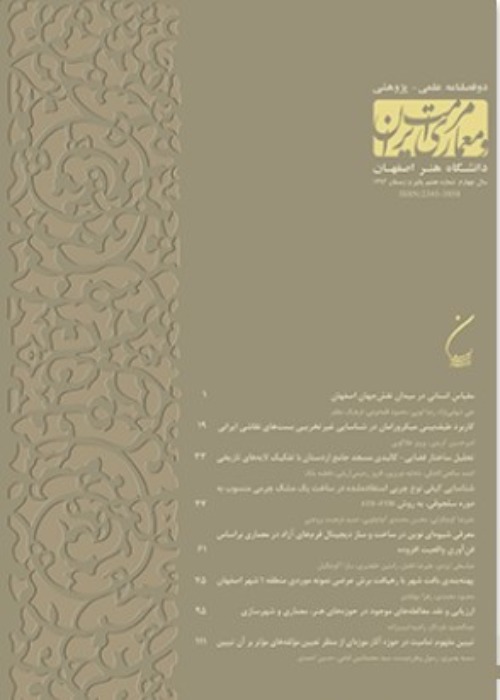Investigating the Supplementary Restorations in Persepolis Stone Reliefs based on Achaemenids Worldview: A Comparative Study
Supplementary restoration which as an intervention measure aimed at compensating for the deficiency in historical and art works, like any other protective measure, requires recognizing and understanding the work. A major part of this understanding comes from our perception about the views and insights of the society that owned the concerned heritage with regards to the art as a tool to express itself: that is their worldview. Numerous studies have already been carried out in Europe and other parts of the world, on the subject of the prevailing philosophy and worldview of the people in different periods such as the ancient Greeks and Romans, medieval, renaissance, etc. These studies have resulted in numerous theories, principles and conventions in the field of the conservation/restoration of cultural properties. However in Iran, except for the several scientific studies on the Islamic art and philosophy, not much has been achieved on the Persian people’s worldview during ancient times and notably in Persepolis during Achaemenids period. This is despite the fact that the restoration works in Persepolis World Heritage site follows the same approved paths and principles based on the western worldview. This paper is focused on the survey of the supplementary restorations implemented on the lost parts of the stone reliefs in Persepolis through field studies and literature review, making an effort to investigate the Persians worldview during the time and its relation with art, and ultimately with the restoration of the remaining heritage. To this end, the worldviews of the ancient Greece and Rome are studied, and the two prevalent cultures of the ancient world, those of the Greeks stemming from Greek mythology, and the Iranian culture springing from the monotheistic ethical principles are compared. Considering the fundamental differences between the worldviews and consequently Iranian art history in Achaemenids era, and their counterparts in Europe, especially those of the Greeks – as the culture which produced European art history and thus their conservation and restoration philosophy- it seems that having similar approaches to the conservation and restoration issues, in particular conservation interventions, may not to be accepted solely based on the philosophical approaches and the art history of the Western World, and therefore there might be a need to review the conservation/restoration.
- حق عضویت دریافتی صرف حمایت از نشریات عضو و نگهداری، تکمیل و توسعه مگیران میشود.
- پرداخت حق اشتراک و دانلود مقالات اجازه بازنشر آن در سایر رسانههای چاپی و دیجیتال را به کاربر نمیدهد.


